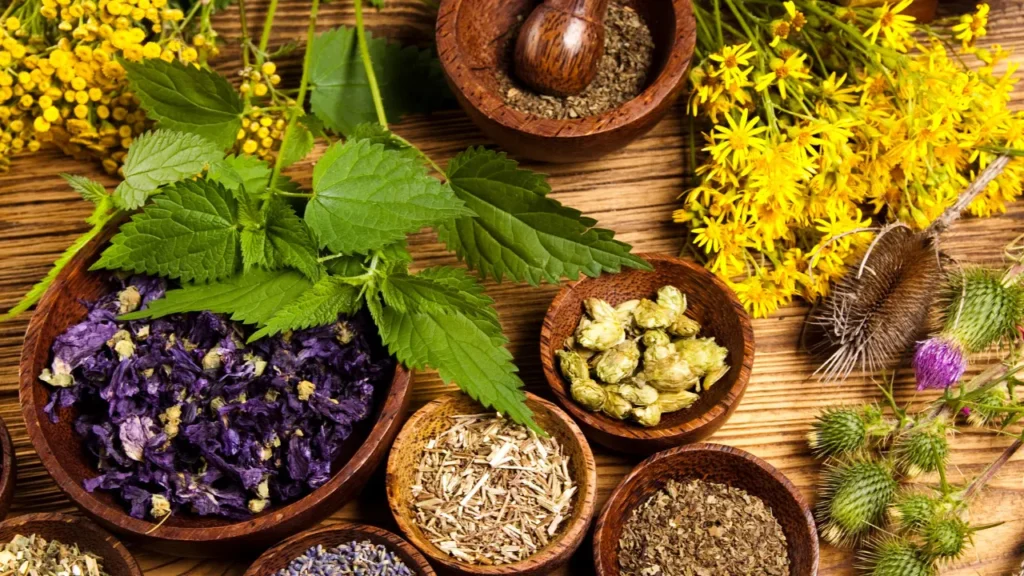The Mediterranean perennial shrub known as Spanish broom (spartium junceum) has attracted attention in the realm of phytotherapy due to its possible nootropic properties. Although it has long been used for a variety of therapeutic purposes, more recent studies have started to show how it might improve cognitive abilities like focus, attentiveness, and general brain health. In order to provide thorough guidance for responsible consumption, this article will analyze the chemical makeup of Spanish broom, clarify its physiological functions, recommend the ideal dosage and discuss any possible negative effects.
You May Also Like:
Tragacanth: Benefits, Dosage, Side Effects, Drug Interactions, and Other Important Information
Transfer Factor: Benefits, Dosage, Side Effects, Drug Interactions, and Other Important Information
Spanish Broom: Benefits, Dosage, Side Effects, Drug Interactions, and Other Important Information is an original (NootropicsPlanet) article.
Nature of Spanish Broom (Spartium junceum)
Spanish broom is a flowering plant native to the Mediterranean region. It is distinguished by its vivid yellow blossoms and thin, nearly leafless green branches. This perennial shrub is well-known for being resistant and tough, growing well in sunny, dry climates where few other plants can. It also frequently grows in poor soils. Spanish broom has been used historically for a variety of uses, such as the manufacture of textiles and dyes, as well as in traditional medicine, where its various ingredients have been used to treat ailments ranging from dropsy to heart issues.
Health Benefits of Spanish Broom
Spanish broom’s abundance of bio-active chemicals, which support a variety of health advantages, have sparked interest in it as a nootropic and medicinal agent. These advantages cover a wide range of physical health and well-being elements in addition to cognitive enhancement.
Cognitive Enhancement: The primary appeal of Spanish broom in the realm of nootropics is its potential to improve cognitive functions. The alkaloid sparteine, in particular, has been suggested to enhance alertness, memory, focus, and the ability to process information efficiently by modulating neurotransmitter activity, especially acetylcholine, which is vital for learning and memory.
Antioxidant Activity: Spanish broom contains flavonoids known for their antioxidant properties. Antioxidants neutralize free radicals, unstable molecules that can cause oxidative stress and damage to cells, including neurons. By combating oxidative stress, Spanish broom can help protect against cognitive decline and support overall brain health.
Anti-inflammatory Effects: Inflammation is a natural response of the body to injury or infection, but chronic inflammation can lead to various health issues, including neuro-degenerative diseases. The anti-inflammatory properties of Spanish broom, attributed to its flavonoid content, can potentially reduce inflammation, offering protection against such conditions.
Cardiovascular Health: Although not directly related to its nootropic effects, Spanish broom’s impact on cardiovascular health is noteworthy. Historically, the plant has been used to treat heart-related conditions. Its bio-active compounds can help in regulating blood pressure and improving heart function, which is crucial for overall health and well-being.
Antimicrobial Properties: The essential oils and other compounds found in Spanish broom have demonstrated antimicrobial activity in some studies. This suggests a potential role for the plant in fighting infections, although this application is more traditional than clinically substantiated in modern medicine.
Neuro-protective Potential: While research is still emerging, the antioxidant and anti-inflammatory properties of Spanish broom hint at neuroprotective effects. By safeguarding neurons from oxidative damage and inflammation, the plant could potentially play a role in preventing or slowing the progression of neuro-degenerative diseases.
When describing the health advantages of Spanish broom, it becomes evident that the plant’s bio-active components have a variety of therapeutic potentials, ranging from promoting cognitive performance to guarding against neuro-degenerative illnesses. Due to the possibility of negative effects and interactions with other drugs, it’s crucial to use caution when using it. Understanding the full scope of its health advantages and developing recommendations for its safe and efficient usage will require more research.

Chemistry of Spanish Broom (Spartium junceum)
Spanish broom, scientifically known as spartium junceum, is a plant rich in a diverse array of bio-active compounds that contribute to its medicinal properties. The chemistry of Spanish broom is primarily characterized by the presence of alkaloids, flavonoids, and essential oils, each playing a pivotal role in its pharmacological effects.
Alkaloids: The most notable alkaloid found in Spanish broom is sparteine, which is considered to be the primary active constituent responsible for its nootropic effects. Sparteine is a quinolizidine alkaloid that has been studied for its potential in cardiovascular therapy and as an oxytocic agent. However, its influence on the central nervous system (CNS) is of particular interest for cognitive enhancement.
Flavonoids: Spanish broom also contains flavonoids, which are known for their antioxidant properties. These compounds help in mitigating oxidative stress within the body, including the brain. Oxidative stress is a contributing factor to cognitive decline and various neuro-degenerative conditions, and thus, flavonoids play a supportive role in enhancing cognitive health.
Essential Oils: The plant is also a source of essential oils, which have been reported to have anti-inflammatory, antimicrobial, and possibly neuro-protective effects. Though not directly linked to cognitive enhancement, these properties contribute to the overall health benefits of Spanish broom, potentially supporting brain health indirectly.
Physiological Properties of Spanish Broom
The nootropic effects of Spanish broom are primarily mediated through its interaction with the central nervous system, particularly through the modulation of neurotransmitters. The key mechanism involves the following aspects:
Acetylcholine Release: Sparteine, the principal alkaloid, is believed to act as an agonist at nicotinic acetylcholine receptors. Acetylcholine is a critical neurotransmitter associated with learning, memory, and attention. By stimulating the release of acetylcholine, Spanish broom enhances neuronal communication and plasticity, which are essential for cognitive processes.
Neurotransmitter Modulation: Beyond acetylcholine, the compounds in Spanish broom can interact with other neurotransmitter systems, albeit to a lesser extent. This interaction could further influence cognitive functions and mental alertness, though the specific pathways and effects require more scientific elucidation.
Antioxidant and Anti-inflammatory Effects: The flavonoids and essential oils in Spanish broom contribute to its antioxidant and anti-inflammatory properties. By reducing oxidative stress and inflammation in the brain, these compounds can help protect neuronal integrity and function, thereby supporting cognitive health and preventing cognitive decline.

Optimal Dosage
The ideal dosage of Spanish broom for nootropic purposes must be carefully considered because it changes depending on the individual’s age, weight, and overall health situation. Clinical trials exploring its dosage for cognitive enhancement are limited, recommending caution and consultation with healthcare specialists prior to use. Preliminary guidelines recommend beginning with modest doses and gradually increasing based on tolerance and efficacy.
Side Effects
Although Spanish broom presents a potential nootropic promise, its safety record should not be disregarded. Headaches, allergic reactions, and gastrointestinal problems are possible side effects. Because sparteine, its main alkaloid, has a limited therapeutic index, greater doses may be harmful. Thus, it is crucial for safe use to keep an eye out for side effects and follow prescribed dosages.
Potential Substance Interactions
It is important to pay attention to any interactions that Spanish broom can have with other drugs and supplements, especially those that influence the central nervous system. Because of the way it works, it could amplify the effects of other cholinergic agents or cause problems for drugs that are metabolized through comparable pathways. Before adding Spanish broom to their regimen, individuals who are using medication for neurological or psychiatric disorders should be cautious and speak with their healthcare practitioners.

Best Responsible Use
Spanish broom is an intriguing choice for anyone looking for natural ways to improve their cognitive abilities. Its ability to act as a nootropic is highlighted by its intricate molecular structure and interactions with neurotransmitter systems. On the other hand, the dearth of thorough clinical investigations on its safety and effectiveness emphasizes the necessity of using it with caution and knowledge. Future studies should clarify its long-term safety profile, offer more precise recommendations for dosage, and thoroughly examine its interactions with other drugs. Through a responsible and evidence-based strategy, consumers can be able to maximize the cognitive advantages of Spanish broom while limiting any potential hazards.
Spanish Broom:
Conclusion
Spanish broom, an herb with vibrant yellow flowers, has been used for various purposes. While its exact medicinal mechanisms remain unclear, people have historically turned to Spanish broom for constipation relief, fluid retention, and heart function improvement. The flowers are even employed as flavoring in foods and beverages, and as a fragrance in soaps and cosmetics. However, caution is advised. Spanish broom contains sparteine, a chemical that could potentially trigger menstruation and pose risks during pregnancy. Despite its historical use, more research is needed to fully understand its effectiveness and safety. For those nurturing Spanish broom plants, consider providing a mineral fertilizer during spring and compost during autumn to ensure their general health.

References:
- Spanish Broom – Uses, Side Effects, and More. Retrieved from:https://www.webmd.com/vitamins/ai/ingredientmono-368/spanish-broom
- Spanish Broom (Spartium junceum L.) fibers impregnated with vancomycin-loaded chitosan nanoparticles as new antibacterial wound dressing: Preparation, characterization and antibacterial activity. Retrieved from: https://pubmed.ncbi.nlm.nih.gov/27931851/
- Development of Spanish Broom and Flax Dressings with Glycyrrhetinic Acid-Loaded Films for Wound Healing. Retrieved from: https://www.ncbi.nlm.nih.gov/pmc/articles/PMC8400884/
Important Note: The information contained in this article is for general informational purposes only, and should not be construed as health or medical advice, nor is it intended to diagnose, prevent, treat, or cure any disease or health condition. Before embarking on any diet, fitness regimen, or program of nutritional supplementation, it is advisable to consult your healthcare professional in order to determine its safety and probable efficacy in terms of your individual state of health.
Regarding Nutritional Supplements Or Other Non-Prescription Health Products: If any nutritional supplements or other non-prescription health products are mentioned in the foregoing article, any claims or statements made about them have not been evaluated by the U.S. Food and Drug Administration, and such nutritional supplements or other health products are not intended to diagnose, treat, cure, or prevent any disease.


